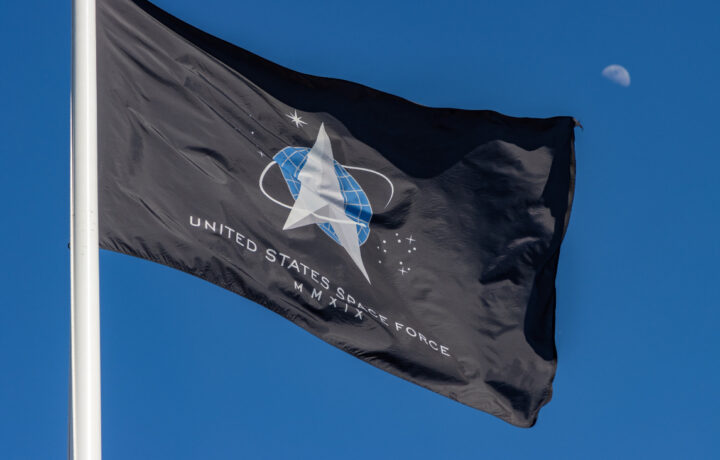Gen. Michael A. Guetlein, the vice chief of Space Operations for the United States Space Force, is already responsible for assisting the Chief of Space Operations. That includes organizing, training, and equipping space forces in the United States and overseas, while he helps integrate space policy and guidance, and coordinate space-related activities for the U.S. Space Force and the Department of the Air Force. He has been tasked with heading up the efforts for the proposed $175 billion “Golden Dome” air defense system, modeled after Israel’s Iron Dome.
On Wednesday, President Donald Trump nominated Guetlein to serve as “direct reporting program manager for Golden Dome for America.”
Trump had first revealed his pick on May 20 at a White House event, where he praised the four-star general’s experience, which included overseeing programs related to space technology. With this nomination, formally submitted to the Senate Armed Services Committee, Guetlein is further elevated from his current role as vice chief, the Space Force’s second-ranking officer, to lead what the White House has touted as one of the country’s top national security priorities.
Three Decades Climbing the Ranks
Gen. Guetlein received his Bachelor of Science degree in Mechanical Aerospace Engineering at Oklahoma State University and was commissioned through the school’s ROTC program in 1991.
According to his official bio, “his acquisition experience spans air and space capabilities and systems across special operations, global power projection, missile warning and detection, and counterspace mission areas. The general has commanded and led at the flight, squadron, division, directorate, Program Executive Officer, and Field Command levels.”
He previously served as the commander of the Space Systems Command, as deputy director of the National Reconnaissance Office (NRO), and commander of the Air and Space Force Element. He was previously the program executive for Programs and Integration at the Missile Defense Agency (MDA) and director of Remote Sensing Systems.
He received his first star when he was promoted to brigadier general on July 22, 2016, and earned his fourth star as a full general officer on December 21, 2023.
The Man to Lead the 21st Century’s ‘Manhattan Project’
The goal of the Golden Dome would be to shield the United States from long-range ballistic and cruise missiles and even hypersonic missile threats. As Politico.com reported in May, the program calls for a multi-layered homeland defense system that could integrate current Pentagon platforms with new, developmental technologies, including space-based sensors and weapons.
Guetlein has compared Golden Dome to the famed Manhattan Project, the secretive program that led to the development of the atomic bomb during the Second World War.
Critics of the program have countered that the administration has underestimated the complexity, suggesting that the costs could be more than a magnitude higher and that it would take decades, not years, to complete. Guetlein may have a challenge navigating what Space News described as “a sprawling constellation of government agencies, military branches and private industry firms,” while he will need to navigate “budget constraints, shifting political priorities and the need for rapid innovation against fast-evolving threats.”
Bipartisan Criticism
The Golden Dome is on track to be far more ambitious than “Star Wars,” the proposed missile defense system that was first announced by President Ronald Reagan in 1983. Missile technology has advanced significantly over the past four decades, including hypersonic weapons that can travel at Mach 5 (five times the speed of sound) while maneuvering in flight.
The U.S. military is already developing technology to counter such threats, and future platforms could be integrated into the Golden Dome. This also serves as a reminder that the initiative is more than a single air defense system; instead, it will encompass a system of systems that integrates land-, sea-, air-, and space-based technologies and platforms.
Gen. Guetlein could be well-suited to dealing with various agencies, military branches, and defense contractors. He will also need to be ready to face lawmakers on Capitol Hill, who remain skeptical of the program and its capabilities.
“We still haven’t seen a clear definition of what it is,” said Rep. Ken Calvert (R-Calif.), Chairman of the House Appropriations Committee’s defense panel, during a June 10 hearing. The lawmaker questioned how the Golden Dome would protect the continental United States, but also how Hawaii and Alaska could be protected without “spending a lot of money unnecessarily.”
The Golden Dome would also leave U.S. overseas territories and military bases unprotected. Just protecting the continental U.S. with batteries similar to those that are the core of Israel’s Iron Dome would cost more than $2 trillion. That’s without the sea-, air-, and space-based platforms that likely would be necessary.
It will now be up to Guetlein to lead the program and to sell it to lawmakers.




